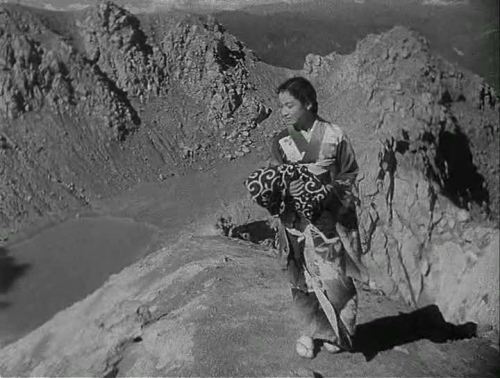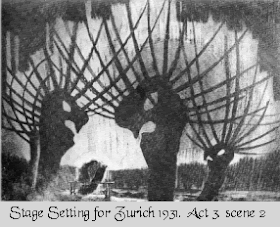For a moment, though, we remained in charm mode, with Schubert's settings of Ludwig Hölty (1748-1776). Der Liebende D207 1815 recaptures the sprightly lyricism of the first version of Der Jüngling am Bache. "Beglückt, beglückt, Wer dich erblickt", bright, sharp consonants, which Prégardien articulated so they sparkled. "Wem süsser Blick, und Wink und Nick Zum sussern Kusse winket". Utterly delicious. Der Traum D218 1815 feels almost like folksong with its paired phrases suggesting the fluttering of a bird : "Mir träumt, ich war ein Vögelein". Prégardien captured the lilting charm in the song with delicate but deft clarity. The sentiments of Die Laube D214, 1815, is decidedly period. "Schauer wird durch meine Nerven haben" and "Wann ich auf der Bahnder Tugend wanke". But Pregardien's respect for the song as song gives it dignity.
Thus were we prepared for more Schiller. Hoffnung D251 1815 is relatively straightforward compared with D 637, a darker and more beautidul setting of the same poem,. but it made a good transition to the Schiller ballad Ritter Togenberg D397 1816. Again, the subject is rather "of its time". a knight, rejected by a maiden, goes on the Crusades where he "Schreckt den Muselmann". When he returns, the girl has become a nun. So the knight spends the rest of his life in a hut near the convent until the girl dies and becomes an angel. Strophic ballads aren't that easy to carry off but they are one of Prégardien's great strengths. He sang with direct, unfussy commitment, so the tale felt totally plausible. Context aside, emotions are universal.
 In his programme notes, Richard Stokes quotes Albert Einstein on Die Liebesgötter D 446 1816, to a poem by Johann Peter Uz, as "Anacreontic doggerel". "Cypris meiner Phyllis gleich, sass von Grazien umgeben....mich berauschten Cyperns Reben". Cypris's grapes have made the poem drunk. As a poem this is a howler. The poet sees nymphs fleeing "mit leichtem Fuss allen Zwang betränkter Kettern flatteren von Fuss zu Fuss und von Blonden und Brünetten". Yer Prégardien makes the song feel right, though he smiled benevolently when singing the florid phrases. If we can take 18th century paintings of Classical Antiquity, we can perhaps take .Uz (1730-1796) on his own terms. In any case, the poem is more risqué than it seems since nymphs hang out with satyrs, and wine frees inhibitions.
In his programme notes, Richard Stokes quotes Albert Einstein on Die Liebesgötter D 446 1816, to a poem by Johann Peter Uz, as "Anacreontic doggerel". "Cypris meiner Phyllis gleich, sass von Grazien umgeben....mich berauschten Cyperns Reben". Cypris's grapes have made the poem drunk. As a poem this is a howler. The poet sees nymphs fleeing "mit leichtem Fuss allen Zwang betränkter Kettern flatteren von Fuss zu Fuss und von Blonden und Brünetten". Yer Prégardien makes the song feel right, though he smiled benevolently when singing the florid phrases. If we can take 18th century paintings of Classical Antiquity, we can perhaps take .Uz (1730-1796) on his own terms. In any case, the poem is more risqué than it seems since nymphs hang out with satyrs, and wine frees inhibitions.
Prégardien and Schnackertz then paired Der Hirt D 490 1816 and Bei dem Grabe meines Vater D496 1816. Both deal with loss. In the first, the poet (Mayerhofer) looks at the tower where his beloved lives now that she's married. In the second, to a poem by Matthias Claudius, the poet mourns his father in conventionally dutiful terms. Both settings are rather dispassionate, and don't draw from Schubert his finest moments, but we need to hear them to appreciate Schubert's work as a whole. That's the point of a complete song series. In that context, Schubert's songs to Mayrhofer shone all the more brightly.
Five more Schubert settings of Mayrhofer followed : Der Alpenjjäger, D524 1817, Nach einem Gewitter D561 1817, Tröst D671 1819, Nachstück D D672 19, Nachtviolen D752 1822 and Alflösung D 807 1824, all of which Prégardien has performed many times in the past and still does with characteristic grace and intelligence.

.jpg)
.jpg)




